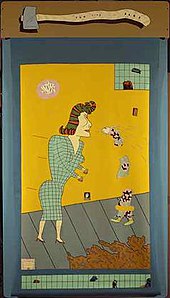
Joseph Elmer Yoakum was an American self-taught painter. He was of African-American and possibly of Native American–descent, and was known for his landscape paintings in the outsider art-style. He was age 76 when he started to record his memories in the form of imaginary landscapes and produced over 2,000 drawings during the last decade of his life.

The Hyde Park Art Center (HPAC) is a visual arts organization and the oldest alternative exhibition space in the city of Chicago. Since 2006, HPAC has been located just north of Hyde Park Boulevard, at 5020 S.Cornell Avenue, in the Kenwood neighborhood of Chicago, Illinois.
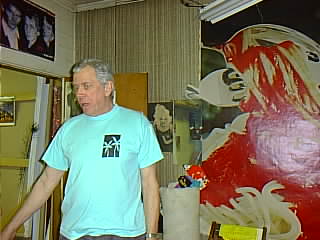
Edward Francis Paschke was an American painter of Polish descent. His childhood interest in animation and cartoons, as well as his father's creativity in wood carving and construction, led him toward a career in art. As a student at the School of the Art Institute of Chicago he was influenced by many artists featured in the museum's special exhibitions, in particular the work of Gauguin, Picasso and Seurat.
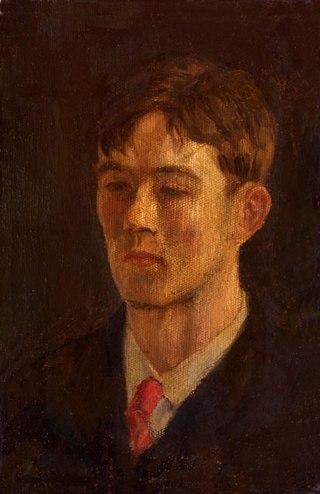
Walter Emerson Baum was an American artist and educator active in the Bucks and Lehigh County areas of Pennsylvania in the United States. In addition to being a prolific painter, Baum was also responsible for the founding of the Baum School of Art and the Allentown Art Museum.
The Ukrainian Institute of Modern Art (UIMA) (Ukrainian: Український Інститут Модерного Мистецтва (Ukrayinskyi Instytut Modernoho Mystetstva)) is a modern art museum serving the Chicago area with an ongoing program of cultural exhibitions, literary events, film screenings, and music recitals. UIMA was founded in 1971 by Dr. Achilles Chreptowsky, Konstantin Milonadis and Mychajlo Urban in the heart of Chicago's Ukrainian Village, Chicago. It is a core member of the Chicago Cultural Alliance, a consortium of 25 ethnic museums and cultural centres in Chicago.
Karl Wirsum was an American artist. He was a member of the Chicago artistic group The Hairy Who, and helped set the foundation for Chicago's art scene in the 1970s. Although he was primarily a painter, he also worked with prints, sculpture, and even digital art.
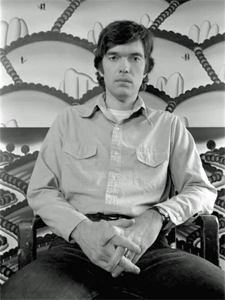
Roger Brown was an American artist and painter. Often associated with the Chicago Imagist groups, he was internationally known for his distinctive painting style and shrewd social commentaries on politics, religion, and art.
Arthur Green was one of the original Hairy Who members from Chicago, a group of students from the School of the Art Institute of Chicago who exhibited together in the 1960s and 1970s and made representational art with a slight surrealist touch. He was also a member of the University of Waterloo's faculty for over 30 years. His painting style mixes pop-art motifs with surrealist tendencies. His upbringing in Chicago and its vicinity may have influenced him, from the accessibility of the Art Institute of Chicago to the architecture of Louis Sullivan, but he also may have been influenced by advertisements from the 1940s and 1950s that had undertones of sexuality. His paintings drew from American popular imagery, but complicated it, often using the full spectrum of vibrant colors and combining trompe l'oeil effects to play with the viewer's sense of balance.
Robert H. Colescott was an American painter. He is known for satirical genre and crowd subjects, often conveying his exuberant, comical, or bitter reflections on being African American. He studied with Fernand Léger in Paris. Colescott's work is in many major public collections, including those of the Museum of Modern Art in New York, the Corcoran Gallery of Art, the San Francisco Museum of Modern Art, the Museum of Fine Arts, Boston, the Hirshhorn Museum and Sculpture Garden, the Baltimore Museum of Art and the Crystal Bridges Museum of American Art.
The Chicago Imagists are a group of representational artists associated with the School of the Art Institute of Chicago who exhibited at the Hyde Park Art Center in the late 1960s.
Visual arts of Chicago refers to paintings, prints, illustrations, textile art, sculpture, ceramics and other visual artworks produced in Chicago or by people with a connection to Chicago. Since World War II, Chicago visual art has had a strong individualistic streak, little influenced by outside fashions. "One of the unique characteristics of Chicago," said Pennsylvania Academy of Fine Arts curator Bob Cozzolino, "is there's always been a very pronounced effort to not be derivative, to not follow the status quo." The Chicago art world has been described as having "a stubborn sense ... of tolerant pluralism." However, Chicago's art scene is "critically neglected." Critic Andrew Patner has said, "Chicago's commitment to figurative painting, dating back to the post-War period, has often put it at odds with New York critics and dealers." It is argued that Chicago art is rarely found in Chicago museums; some of the most remarkable Chicago artworks are found in other cities.
Gladys M. Nilsson is an American artist, and one of the original Hairy Who Chicago Imagists, a group of representational artists active during the 1960s and 1970s. She is married to fellow-artist and Hairy Who member Jim Nutt.
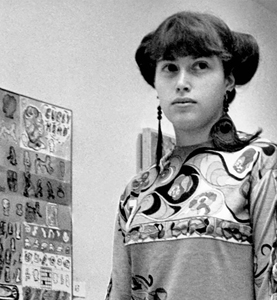
Suellen Rocca was an American artist, one of the original Chicago Imagists, a group in the 1960s and 1970s who turned to representational art. She exhibited with them at the Hyde Park Art Center from 1966 through 1969. She was curator of the art collection and director of exhibitions at Elmhurst College.
Culture Coast Chicago is a collection of artistically vibrant neighborhoods on the South Side of Chicago, Illinois, United States. Known for its high concentration of museums, music and theater ensembles, performance venues, cultural nonprofits, and arts education opportunities, the region spans from just south of McCormick Place to the South Shore Cultural Center and is bordered by Lake Michigan to the east and the Dan Ryan Expressway to the west.
Christina Ramberg was an American painter associated with the Chicago Imagists, a group of representational artists who attended the School of the Art Institute of Chicago in the late 1960s. The Imagists took their cues from Surrealism, Pop, and West Coast underground comic illustration, and their works often included themes of female sexuality. Ramberg depicted partial female bodies forced into submission by undergarments and imagined in odd, erotic predicaments.

Richard Wetzel is an American artist. He is best known for his oil paintings but also has exhibited collages and sculpture. In 1969 and 1970, Wetzel exhibited with the Chicago Imagists, a grouping of Chicago artists who were ascendant in the late 1960s and early 1970s.
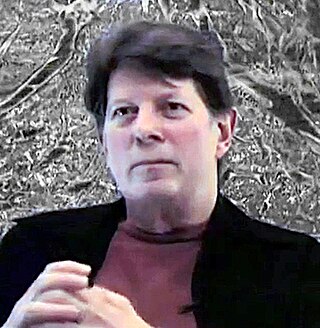
Thomas Kovachevich is an American contemporary visual artist and physician. Kovachevich's art practice is multi-faceted; exhibitions of paintings, sculptures, installations and performances have represented the lexicon of this artist.
Margaret Wharton (1943-2014) was an American artist, known for her sculptures of deconstructed chairs. She deconstructed, reconstructed and reimagined everyday objects to make works of art that could be whimsical, witty or simply thought-provoking in reflecting her vision of the world.

Don Baum was an American curator, artist and educator, most known as a key impresario and promoter of the Chicago Imagists, a group of artists that had an enduring impact on American art in the later twentieth century. Described by the Museum of Contemporary Art, Chicago (MCA) as "an indispensable curator of the Chicago school," Baum was known for lively and irreverent exhibitions that offered fresh perspectives combining elements of Surrealism and Pop and that broke down barriers between schooled and untrained, or so-called outsider artists. From 1956 to 1972, Baum was exhibitions director at Chicago's Hyde Park Art Center. It was there, in the 1960s, that he became involved with a group of young artists he exhibited as "Hairy Who" that later expanded to become the Chicago Imagists. That group included Ed Paschke, Jim Nutt, Roger Brown, Gladys Nilsson, and Karl Wirsum. Baum mounted two major shows at the MCA that featured the emerging artists in their first museum exhibitions: "Don Baum Sez: 'Chicago Needs Famous Artists'" (1969) and "Made in Chicago" (1973), which shaped a vision of Chicago's art world as a place of meticulous craftsmanship and vernacular inspiration.
Phyllis Barbara Kind was an American art dealer active in Chicago and New York. She promoted the work of the Chicago Imagists and outsider artists.
